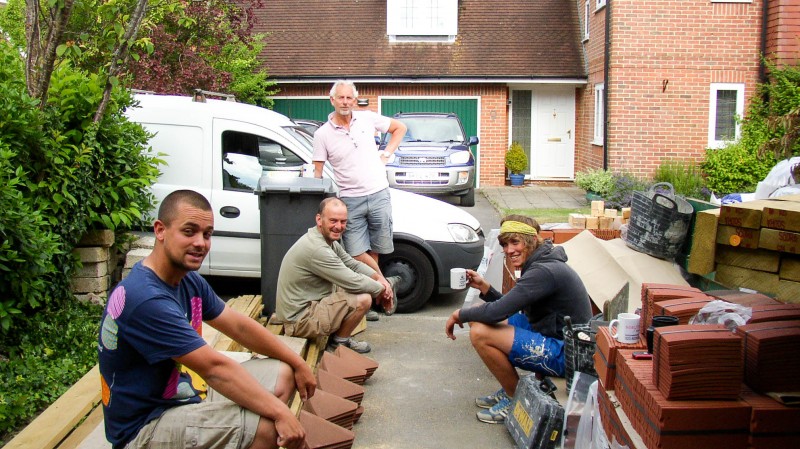You are here: Are there building jobs I can do myself? There is a shortage of builders in our area.
Besides the impact on public health, the coronavirus pandemic is having knock-on effects in every area of our lives. One of these is that builders and tradespeople are inundated. The wave of people wanting to make home improvements after spending so much time at home has put pressure on builders and tradespeople across the UK. We spoke to one builder who is fully booked for the next 12 months, which can be incredibly frustrating if you have building projects to do and no one available to do them for you.
While there are many building jobs that you really do need qualified builders and tradespeople for, if you are willing to roll your sleeves up and put in the hard graft then there are also some that you can have a go at yourself.
However, before you start any building works, make sure you have taken a good look at Building Regulations so that you know exactly what is required in order to make your home safe. It can cause problems further down the line when you come to sell if you don’t have the right permissions in place.

Re-plastering
Plastering is one of those jobs that is time consuming and involves a level of skill that most of us don’t possess. But, it can help you to transform dated Artex ceilings, crumbly and uneven walls and provide the perfect finish for walls needing a re-paint.
A quick Google search of “DIY plastering course” brings up hundreds of results for short courses, at reasonable prices, where you can learn how to plaster and get those jobs done in your house that are crying out for a re-surface.
Prices are in the region of £500, split across a few days of training but with some people waiting up to a year to get work done on their homes it will be quicker, and cheaper, than waiting for a plasterer.
Replace internal door frames
Door frames take a battering. From multiple moves, re-shuffling furniture or being hit with the vacuum cleaner every now and then, they can date very quickly.
Sprucing them up can brighten up your rooms and make everything seem fresher. While it’s not a hugely difficult task, you’ll need a few tools in order to take out the old door frame and put your new one in place.
A utility knife, pair of pliers, hammer, wood chisel and a pry bar will help you to get your existing frame out relatively easily.
For a bit of extra reassurance, B&Q has two short videos that explain the process for removal and installation, which should help you on your way.
Repointing brickwork
Repointing brickwork helps to keep your external walls watertight – stopping leaks and damp from creeping into your home. And, despite what you might think, repointing your brickwork is a building job that you can tackle yourself with some planning and the right tools and materials.
You’ll need to invest in scaffolding if you’re planning on doing your whole house, so that you can complete the work safely. Getting the right tools for the job is also essential.
Trying to match the colour of the existing mortar is recommended if you’re only doing small sections, so that any new patches don’t stand out against the old. If you’re struggling to find a match, your local builders’ merchant should be able to help you.
Fitting kitchens & bathrooms
According to Real Homes, fitting your own kitchen could save you up to £5,000 in labour costs. This is a good incentive to go-it-alone but add in the long wait times for tradespeople and builders to fit you in, and it seems like an even more attractive prospect.
Most kitchen and bathroom retailers offer a design service as part of the purchase, so once you have got the plans then fitting your kitchen, or bathroom, is a lot easier. B&Q has loads of videos on how to install various elements of your kitchen but preparation is key.
Make sure that your flooring, ceiling and your walls are all ready to have fixtures and fittings attached to them. If you are re-fitting your bathroom, check to see if you’ll need any additional pipes or electrics installed before you start.
You will also need to plan for qualified tradespeople to install things like boilers, lighting and gas appliances, so maintaining a schedule can help – otherwise you might overrun and lose their precious availability.
There are plenty of other DIY building options available to you if you really want to take things further. Bricklaying, plumbing and woodworking courses are found at most local colleges so if you’re keen to get things moving yourself then these are great places to start.
If you are looking to make some home improvements, you may find some of these services useful
Building Regulations
Find details of local experts who can help with Building Regulations
Architectural Design Services
Find local Architectural Design experts
Builders
Find local help with a building project
Structural Inspections
Find an expert to carry out a structural inspection
Building Surveys
I want a local surveyor to do a Building Survey for me

